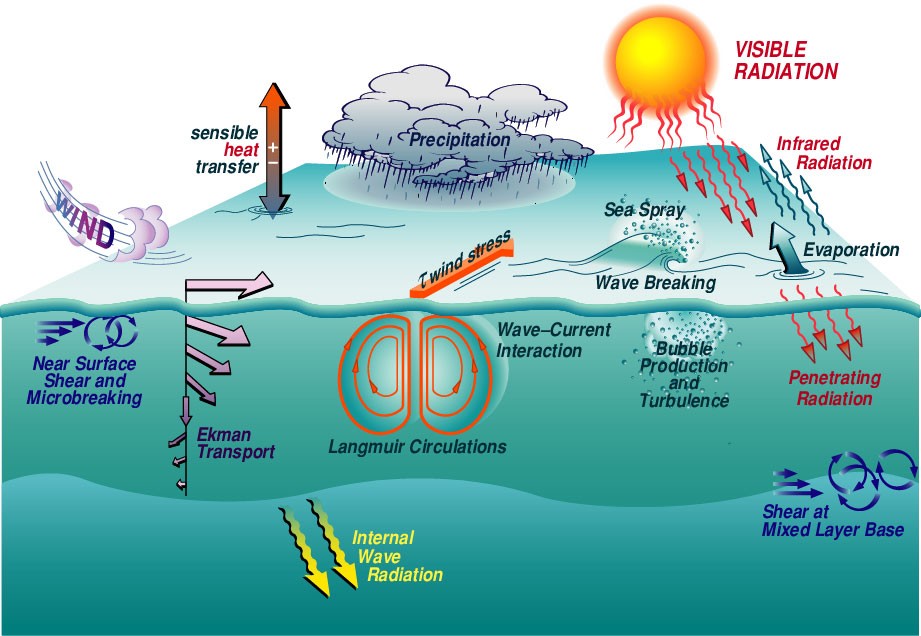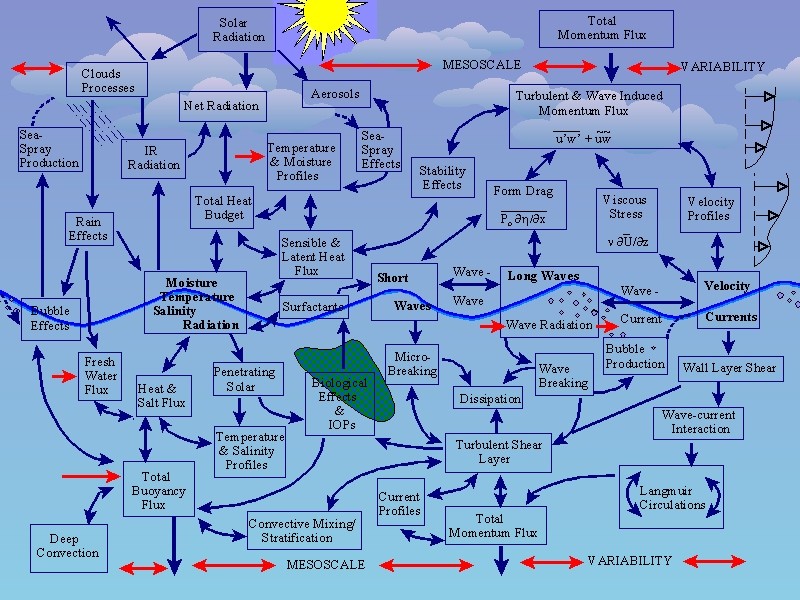|
Defense Research Initiative CBLAST DRI |
|
Defense Research Initiative CBLAST DRI |
|
 
The
Coupled Boundary Layers Air-Sea Transfer Defense Research Initiative
(CBLAST-DRI) focuses on processes that occur in the oceanic and atmospheric
wave boundary layers, which are regions influenced by ocean surface
waves. This Office of Naval Research (ONR) program combines observational
and modeling components in all of its investigations. These investigations
will focus on processes that couple the turbulent atmospheric and oceanic
boundary layers across the interface through the exchange of momentum,
mass, and heat. Understanding the influence of surface waves and
determining the 3-D structure of these boundary layers is one of the
main objectives of this program. Two regimes will be emphasized:
a low wind, convectively (heating/ cooling) dominated regime, typically
less than 5 m/s, with investigations of the transitions from stable
to unstable flows where the buoyant forcing changes sign and from smooth
to fully rough seas where wave-induced processes begin to dominate;
and a very high wind regime with wind speeds greater than 20 m/s up
to hurricane strength where in situ and remote observations are
desperately needed to improve and evaluate forecast models. |
|
|
|